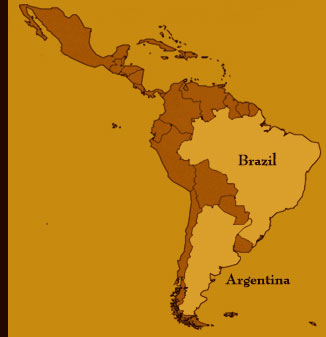
Corruption
Corruption. Often it is the first word people associate with various elements of Latin American legal systems and governments. Corrupt police, corrupt bureaucrats, corrupt politicians, even corrupt judges. When we look at Latin America from this side of the Rio Grande, we often think these characters are inevitable and pervasive. Just how extensive is corruption in Latin America? How does the region compare to others, or to the United States? Who is more corrupt - judges, politicians, the police? What do we mean by corruption? How much corruption is there really?
In addition to these questions, of course, we need to understand the source of corruption. Is there a culture of corruption in the region? Is it a moral failure, or perhaps evidence of some deficiency in the Latin American character (if there is such a thing)? How can we understand it? Who is fighting it? What is their success rate?
The readings and discussions in this unit will get us a little closer to answering all these questions. We will understand the economic incentives and institutional features that make it more likely that corruption will prevail in a given context. And we will see how certain governmental units - prosecutors, anti-corruption offices and the like - are fighting against corruption.
It is all too easy to dismiss most of the ills that afflict the region as either corruption or caused by corruption, and from there we are only a step away from believing that these countries get what they deserve. We may learn, however, that corruption is not as broad and widespread as we believe, that many people are working hard to rid the region of corruption, and that some of the facile solutions being offered might actually be counterproductive.
- Reading 1: Rose-Ackerman - "Is Leaner Government Necessarily Cleaner Government?" (.pdf)
- Reading 2: Manzetti - "Market Reforms without Transparency" (.pdf)
- Reading 3: Sadek and Batista Cavalcanti - "The New Brazilian Public Prosecution: An Agent of Accountability" (.pdf)
- Country Profile: Argentina
- Country Profile: Brazil
